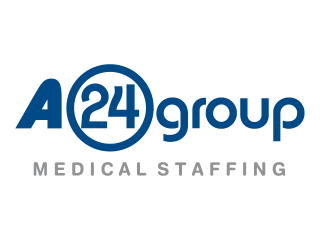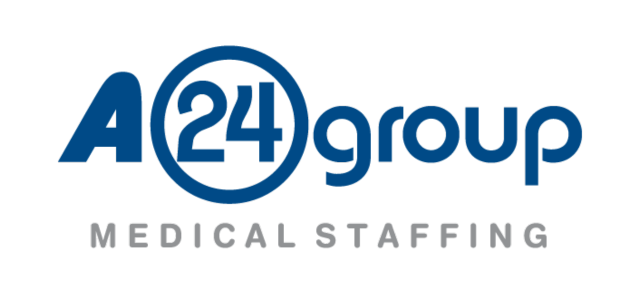How Can We Improve Employee Retention and Reduce Turnover Rates?
Employee retention and turnover rates are critical issues in the healthcare sector. High turnover rates disrupt patient care, increase costs, and strain remaining staff. Replacing staff is not only costly but also time-consuming. Here, we explore effective strategies to improve retention and reduce turnover rates, with insights from A24 Group, a leader in medical staffing services across South Africa, the United Kingdom, and now the United States.
Understanding the Problem
High turnover rates in healthcare stem from various factors:
Burnout: Long hours and high stress levels lead to burnout.
Workload: Excessive workloads cause physical and mental fatigue.
Work Environment: Poor working conditions and lack of support contribute to dissatisfaction.
Career Development: Limited opportunities for growth and advancement drive employees to seek better prospects elsewhere.
Costs and Statistics on Turnover and Retention in Healthcare
The average cost of recruiting a nurse can vary significantly between countries due to differences in healthcare systems, recruitment processes, and associated expenses.
United Kingdom
In the UK, the average cost of recruiting a nurse is estimated to be around £10,000 to £12,000. This includes advertising, agency fees, interview costs, and onboarding expenses. The NHS also faces additional costs related to temporary staffing and overtime to cover vacancies during the recruitment process. The NHS faces significant challenges with nurse retention. In the year leading up to March 2023, nearly 27,000 nurses left the register, with more than half leaving earlier than planned due to burnout, workload, and concerns over care quality (3).
Adam Streeter, CEO of A24 Group
South Africa
The turnover rates for healthcare professionals in South Africa are notably high, with factors such as lack of training, staff shortages, inadequate salaries, poor working conditions, and insufficient medical support contributing significantly (1). The turnover rate for nurses in public healthcare facilities can reach up to 45% annually (2). The cost of recruiting a nurse can range from R50,000 to R70,000. This includes advertising, recruitment agency fees, and training costs. The high turnover rates and staff shortages in the public healthcare sector can further increase these costs due to the need for temporary staffing and overtime.
United States
The average cost of recruiting a nurse is approximately $46,100 per position. This figure includes recruitment costs, onboarding, and the expenses associated with filling the vacancy temporarily. The time to fill a vacant RN position can take up to 87 days, adding to the overall cost. In 2023, the average turnover rate for registered nurses in U.S. hospitals was 18.4%, a decrease from 22.5% in 2022. The highest turnover rates were among telemetry nurses, while the lowest were in paediatrics (4).
5 Effective Retention Strategies
To address these issues, healthcare organisations must implement comprehensive retention strategies. Here are some proven methods:
Improve Work Environment
Ensure safe and supportive working conditions.
Provide necessary resources and equipment.
Foster a positive and inclusive workplace culture.
Offer Competitive Compensation
Regularly review and adjust salaries to match industry standards.
Provide benefits such as health insurance, retirement plans, and paid leave.
Support Professional Development
Offer training and development programmes.
Encourage continuous education and certification.
Provide clear career progression paths.
Enhance Work-Life Balance
Implement flexible scheduling options.
Promote a healthy work-life balance through wellness programmes.
Offer mental health support and counselling services.
Recognise and Reward Employees
Acknowledge achievements and contributions.
Implement reward and recognition programmes.
Provide opportunities for advancement and leadership roles.
The Role of A24 Group: Staffing Services You Can Rely On
A24 Group stands at the forefront of medical staffing services and recruitment for healthcare staff.
Our commitment to excellence and innovation sets us apart in the industry.
Here’s how we lead the way in Improving Employee Retention and Reducing Staff Turnover
Comprehensive Recruitment Process: We use a thorough recruitment process to ensure we match the right candidates with the right roles. This reduces turnover by ensuring job satisfaction from the start.
Ongoing Support: We provide continuous support to our staff, including training, career development, and mental health resources.
Flexible Staffing Solutions: Our flexible staffing solutions cater to the unique needs of each healthcare facility, ensuring optimal staffing levels and reducing burnout.
Global Reach: With operations in South Africa, the United Kingdom, and now the United States, we bring a wealth of experience and expertise to our clients and staff.
Improving employee retention and reducing turnover rates in healthcare requires a multifaceted approach. By addressing the root causes of turnover and implementing effective retention strategies, healthcare organisations can create a more stable and satisfied workforce.
A24 Group remains dedicated to leading the way in medical staffing services, ensuring that both our clients and staff receive the best possible support and opportunities.
For more information on how A24 Group can help your organisation improve retention and reduce turnover rates, please contact us today. Together, we can build a stronger, more resilient healthcare workforce.



